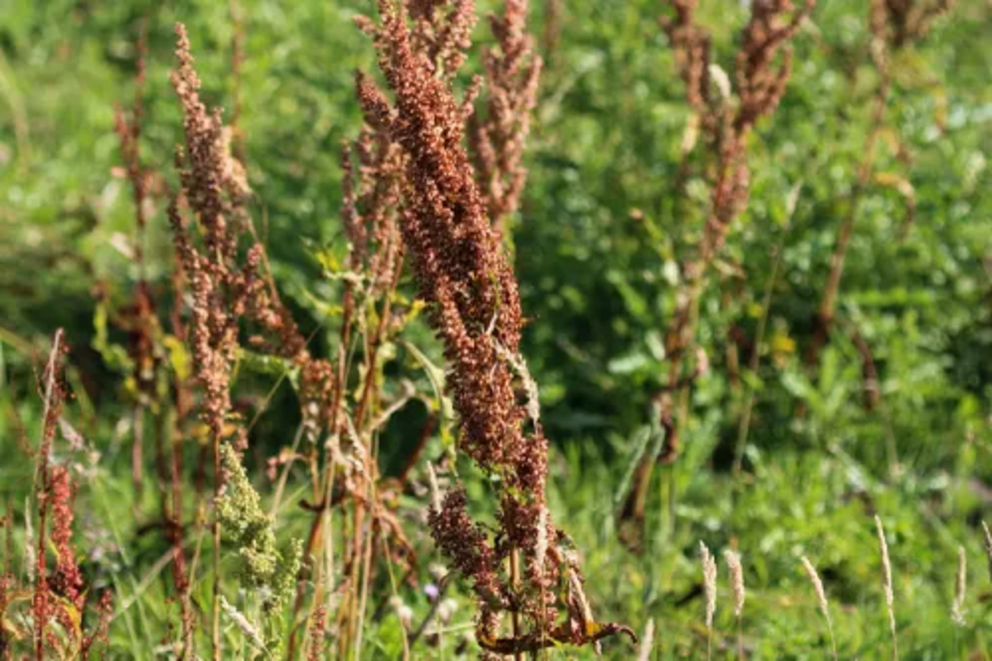How to make and use flour from dock seeds
Fact checked by Haley Mast
Turn an edible weed into a useful ingredient.
Letting weeds flourish on your property can bring many benefits, not only to native wildlife but also for you.
Nettles (Urtica dioica), fireweed or rosebay willowherb as we call it here (Chamaenerion angustifolium), and dock (Rumex obtusifolius) are three of the most abundant and most useful weeds growing on my property.
Recently, I harvested a large quantity of seeds from the dock growing here. Today I thought I would share how I use those seeds to make flour and how I use it.
Harvesting Dock Seed
Many people will be familiar with the sight of the dried brown seed stalks of dock, which endure from late summer or early fall right through into winter. But few people realize just how useful these seeds can be.
Dock seeds (both Rumex obtusifolius and Rumex crispus) are actually in the same family as buckwheat, which is well known for its healthy and nutrient-rich seeds. And to me, the taste of the ground seeds is not dissimilar to buckwheat seeds and flour.
If you look at the dock up close, you will see that on each stem are hundreds of seeds encased in papery brown seed casings. Even those who are familiar with the edibility of the seeds may be put off because they imagine that it will be very difficult to remove these seeds from their casings.
The good news is that you do not need to. The papery casings won't do any harm and can be ground along with the seeds to create a fiber-rich flour. They don't provide much nutritionally, but help add roughage to your diet.
Harvesting, therefore, could not be easier. Run your hand up the stems and you will easily be able to harvest a large quantity of the seeds in their casings in no time at all. Make sure you do this outside, though, or it can make quite a mess.
Preparing Dock Seeds
Some people find that the seeds taste rather bitter when used right away. Soaking them overnight in water will remove this slight bitterness. Though not an essential stage, in my opinion this can be beneficial for the best flavor.
After soaking the seeds overnight, the next stage involves drying them thoroughly before they can be ground. I gently roast the seeds in my oven for around 10 to 15 minutes so that they are dried out thoroughly but not burned. This gentle roasting also brings out a slight nutty flavor.
Making Dock Seed Flour
Once the seeds in their casings are thoroughly dry, they should break and crumble a little as you rub them between your hands. You can, if you wish, follow a traditional process and winnow the seed from the chaff at this stage.
But I don't bother. I simply use a blender to blitz the seeds and their casings into a fine flour. You can also use a coffee grinder, or even a mortar and pestle, though of course this will take a lot longer.
If you wish, you can use the seeds without blending to make dock seed crackers. But I prefer to make the flour, and to use a blender. This is typically very easy to do as long as they are fully dry.
How to Use Dock Seed Flour
Dock seed flour does not contain gluten, so it will not create a light and airy bread. But I love to add some of my dock seed flour to a traditional wheat bread, made with local heritage wheat grain flour.
My favorite recipe involves using one-third wholemeal flour, one-third plain white flour, and one-third dock seed flour to make a hearty, rustic loaf. You can make a yeast bread or a soda bread, both of which work out well with a proportion of dock seed flour in the mix.
Dock seed flour also works well alongside oats in crackers, rolled very thin with a little salt, herbs, and as little water as possible. Another great recipe uses dock seed flour to make pancakes (very like buckwheat pancakes). You can use it in sweet baking recipes, since it pairs well with chocolate. Chocolate dock seed brownies are another great way to use up this free and abundant natural food source.
So, the next time you see dock, don't just think of it as a weed. Think of this plant as a wild edible that just keeps on giving, since not only will it provide seeds, but also greens—leaves and young stems—that get bitter as they age but are great to cook with in spring.

